Ancient Agora: The Heartbeat of Ancient Athens

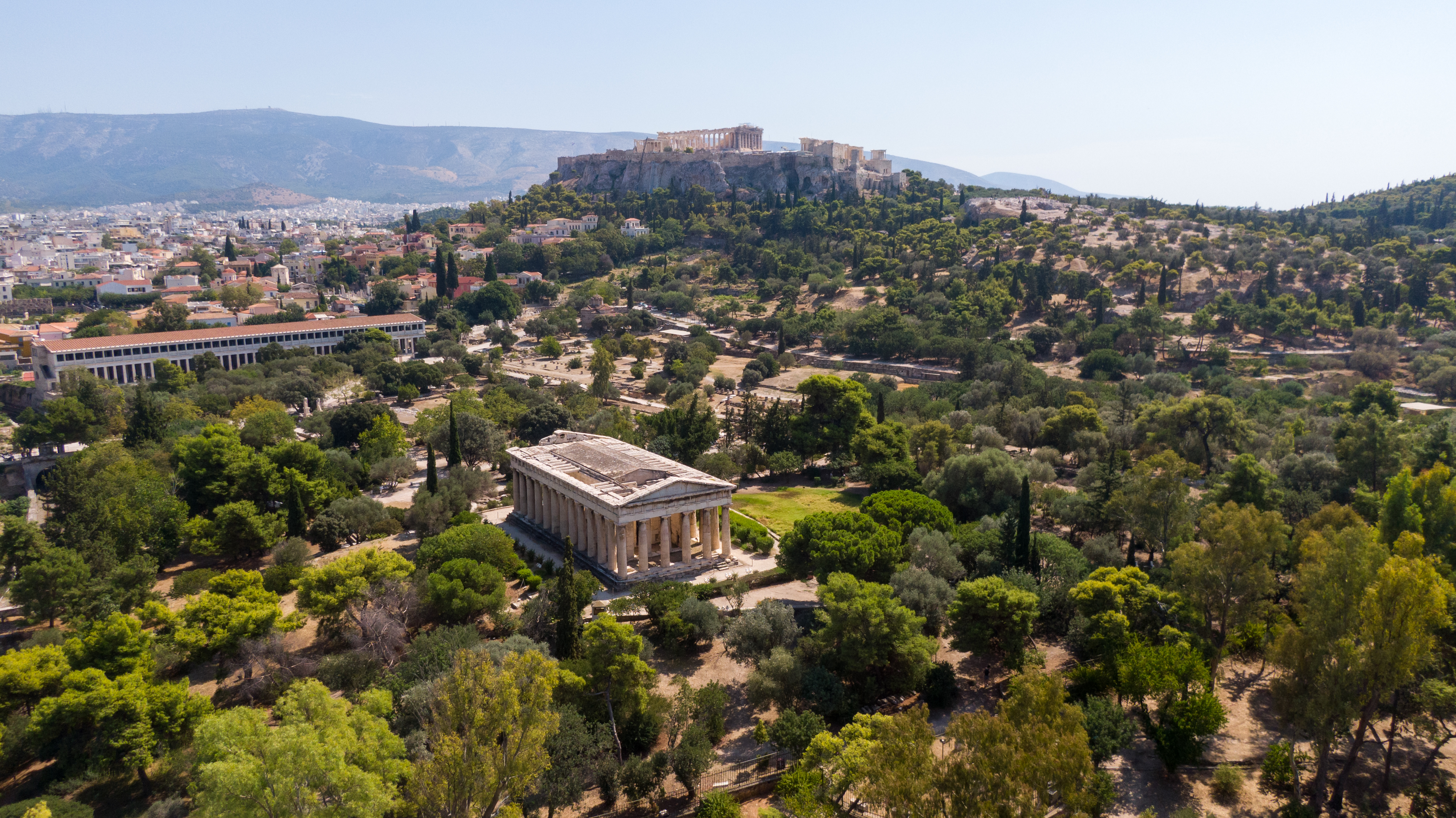
Get off the beaten path and walk through the Ancient Agora of Athens. It is like stepping into the very soul of the city. As an archaeologist, I’ve often wandered these grounds, imagining the bustling life that once filled these spaces. The Agora, located just northwest of the Acropolis, wasn’t merely a marketplace — it was the beating heart of ancient Athenian life. Established in the 6th century B.C., this space evolved into the focal point of civic life, where citizens gathered not only to buy and sell goods but also to participate in debates, religious ceremonies, and witness the birth of democracy.
The Agora’s evolution is a reflection of Athens itself. From the days of simple trade to the height of Athenian democracy, this place witnessed it all. Every corner of the Agora tells a story, and every stone underfoot carries the weight of history. It’s a place where you can feel the pulse of ancient Athens, where citizens once gathered not just to buy and sell goods but to debate, worship, and lay the foundations of democracy.
Architectural Marvels of the Agora
The Hephaisteion: A Temple Frozen in Time
Perched on a hill overlooking the Agora, the Hephaisteion is a masterpiece of ancient Greek architecture and the best-preserved temple in all of Greece. As you approach, you can’t help but feel a sense of awe at its grandeur. Dedicated to Hephaestus, the god of fire and craftsmanship, and Athena, the goddess of wisdom, this temple was the heart of the Agora’s spiritual life. The temple’s pristine Doric columns and intricately carved friezes depict the labors of Hercules and the exploits of Theseus, Athens’ legendary hero. The preservation of the Hephaisteion is so remarkable that it feels like stepping back into ancient times, offering a tangible connection to the world of the ancient Athenians. It’s a place where the past isn’t just remembered—it’s still alive.
The Stoa of Attalos: A Rebirth of History
The Stoa of Attalos is not just an ancient relic but a rebirth of history itself. Originally constructed by King Attalos II of Pergamon in the 2nd century B.C., this stoa was more than a marketplace; it was a social hub where Athenians would gather, shop, and discuss the issues of the day. What makes the Stoa of Attalos even more fascinating is its modern reconstruction in the 1950s by the American School of Classical Studies at Athens. The effort to rebuild it using original materials and ancient techniques has turned it into a living museum. Today, it houses the Museum of the Ancient Agora, where visitors can explore artifacts that tell the story of Athenian democracy. Walking through its long colonnades, you can almost hear the echoes of merchants calling out their wares and philosophers engaging in debate.
The Tholos: The Heart of Athenian Power
In the bustling heart of the Agora lies the Tholos, a circular building that once served as the headquarters for the Prytaneis, the executive committee of the Athenian government. This was where the city’s leaders lived, dined, and made decisions that would shape the future of Athens. The Tholos is not just an architectural curiosity; it’s a symbol of Athenian democracy in action. Imagine the tension and excitement as crucial debates unfolded within its walls, with decisions that could mean prosperity or peril for the city. The Tholos is a reminder that the Agora was not just a marketplace but the very center of political life in ancient Athens.
The Bouleuterion: The Engine Room of Democracy
The Bouleuterion is where the engine of Athenian democracy roared to life. This rectangular building was the meeting place of the Boule, the council of 500 citizens who were chosen to govern Athens. Here, within these unassuming walls, the course of Athenian history was charted. Policies were debated, laws were passed, and the will of the people was translated into action. Visiting the Bouleuterion, you can almost feel the weight of the decisions made here—the echoes of voices debating the issues that would define the city and its legacy. It’s a place where the ideals of democracy were not just discussed but put into practice, and its influence can still be felt in modern democratic institutions around the world.
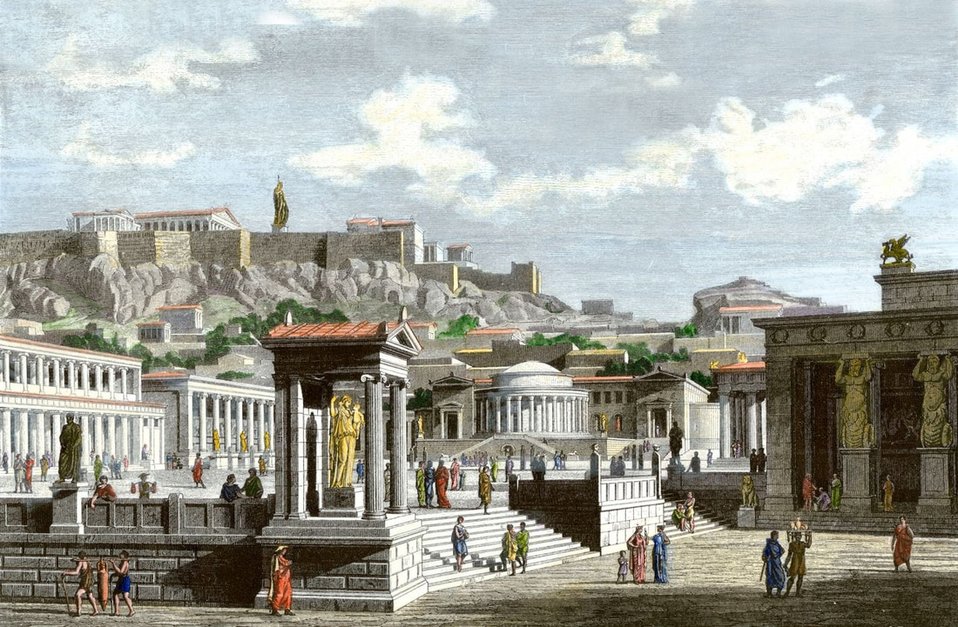
Life in the Agora: The Intellectual, Political, and Religious Core of Athens
The Ancient Agora of Athens was a central hub where the most critical aspects of Athenian life intersected—philosophy, politics, and religion. The remnants of this space reveal a site where ideas, governance, and spirituality were deeply intertwined, shaping the very foundation of Western thought.
The Agora as a Nexus of Philosophical Thought
The Ancient Agora of Athens was more than just a marketplace; it was the intellectual epicenter of the city, where philosophy was not merely discussed but lived and practiced in public. It was within this bustling space that the foundations of Western philosophy were laid, with a remarkable convergence of thinkers who would go on to shape the intellectual history of the world.
The Agora served as the stage for Socratic dialogue, where Socrates engaged with citizens from all walks of life, using his method of questioning to probe the ethical and moral foundations of Athenian society. Yet, Socrates was not alone in making the Agora a hub of philosophical activity. The Agora was also frequented by other prominent philosophers, including Antisthenes, the founder of the Cynic school, who would often be found in the Agora mocking societal norms and promoting a life of asceticism and virtue. His presence, alongside that of Socrates, highlights the Agora as a place where philosophical debate and inquiry were integral to daily life.
Moreover, the Agora’s Stoa Poikile (Painted Stoa) became the birthplace of Stoicism, founded by Zeno of Citium around 300 BCE. Unlike the more isolated settings preferred by Plato or Aristotle, the Stoics chose the Agora’s public colonnade to engage with Athenian citizens directly. This choice of venue was symbolic, reflecting their belief that philosophy should be practical and accessible, influencing everyday life and guiding public affairs. The Stoics’ teachings on ethics, logic, and natural law had a profound impact on Roman thought and later Western philosophy, with echoes of their ideas still resonating in modern philosophical discourse.
The philosophical life of the Agora was not confined to these schools alone. It was a dynamic environment where Epicureans, Platonists, and various other thinkers engaged in debates and discussions that would echo through the centuries. The Agora, therefore, was not just a physical space but a crucible of ideas, where philosophy was democratized and integrated into the fabric of Athenian civic life.
The Agora: The Cradle of Athenian Democracy
Politically, the Agora was the beating heart of Athenian democracy. The Bouleuterion, which housed the city’s council, and the Tholos, where the prytaneis (executive committee) dined and met, were crucial to the daily operation of the democracy. Here, policies were debated, decrees were issued, and decisions were made in the full view of the public. Unlike the closed-door politics of later eras, Athenian political life was conducted with a remarkable level of transparency and citizen involvement, a radical experiment in direct democracy that has influenced political thought for centuries.
The Agora also served as the site for public trials. The Heliaia, the largest court in Athens, was located here. Justice was a public affair, with large juries composed of ordinary citizens who would listen to the cases and render verdicts. This system underscored the idea that governance was a communal responsibility, where every citizen had a stake in the rule of law.
The Agora: Religious and Cultural Life
Religiously, the Agora was equally significant. Temples and altars dotted the landscape, each serving as a focal point for worship and ritual. The Temple of Hephaestus, often mistakenly identified as the Theseion, stood prominently, dedicated to the god of metalwork and craftsmanship. The Altar of the Twelve Gods was another key religious site, marking the central point of the city from which all distances were measured.
The Agora was also the scene of many of Athens’ grand religious festivals, such as the Panathenaic procession, which would wind its way through the city, passing through the Agora on its way to the Acropolis. These festivals were more than religious observances; they were expressions of civic pride and unity, reinforcing the collective identity of the Athenian people.
Archaeological Excavations: Unveiling the Layers of the Past
As an archaeologist, I find the story of the Ancient Agora’s excavation to be as fascinating as the site itself. The excavations here, primarily conducted by the American School of Classical Studies at Athens (ASCSA) since the early 20th century, have been nothing short of revelatory. Walking through the Agora today, it’s almost impossible not to feel the weight of the discoveries that have shaped our understanding of Athens’ past.
The systematic exploration began in 1931 under T. Leslie Shear Sr., focusing on uncovering the Agora’s key structures—the Stoa of Attalos, the Bouleuterion, the Tholos, and the Temple of Hephaestus. These early digs unearthed the first tangible evidence of the Agora’s layout during the 5th century BC, offering an incredible glimpse into its role as the heart of Athenian democracy.
Over the years, these excavations have covered more than 12 acres, peeling back layers of history from the Late Neolithic period to the Byzantine era. One of the most significant discoveries was the Altar of the Twelve Gods, a landmark that served as a reference point for measuring distances in the city. Uncovering this altar, dedicated around 522 BC, was a moment that deeply underscored the religious, political, and social importance of the Agora.
I’m particularly drawn to the ruins of the Stoa Poikile, or Painted Stoa, famous for its depictions of historical and mythical battles. Although only fragments of this stoa remain, they tell us so much about the artistic and cultural life of ancient Athens. These discoveries are more than just remnants of stone; they’re windows into a world that valued art and philosophy as much as politics and commerce.
Recent excavation efforts have continued to enrich our understanding, especially in the northern section of the Agora. The demolition of modern buildings has allowed us to explore previously hidden parts of the site, uncovering more about the Roman and Byzantine periods of the Agora’s history. Each new find feels like another piece of a puzzle falling into place, deepening our connection to this ancient heart of Athens.
The ongoing work at the Ancient Agora is a testament to the enduring legacy of Athens as a center of culture, politics, and philosophy. Every step in this hallowed ground, every stone uncovered, brings us closer to the lives of the Athenians who walked here thousands of years ago.
Connecting the Dots: The Agora’s Legacy
The Ancient Agora of Athens, when viewed from a bird’s-eye perspective, reveals itself as more than just a historical site; it is a palimpsest of human civilization, a place where the layers of time intersect to tell a profound story of continuity, transformation, and influence. Originally conceived as the heart of civic life in classical Athens, the Agora was where democracy itself was practiced and refined. It was here that the world first witnessed the birth of participatory governance, where every male citizen had a voice and a role in shaping the future of the city-state. This concept of democracy would ripple outward from Athens, influencing political thought and systems across the globe, from the Roman Republic to modern democratic nations.
As centuries passed, the Agora continued to serve as a vital hub, adapting to the changes brought by new empires and cultures. Under Roman rule, the Agora retained its importance, albeit with a different focus. The Romans, recognizing the significance of the site, added their architectural flair while maintaining the space as a center for social and political life. The blend of Greek and Roman elements within the Agora symbolized a broader cultural synthesis that would define much of the ancient world, spreading Greek ideas, art, and philosophy far beyond the borders of Greece itself.
The Agora’s story did not end with the fall of ancient civilizations. Through the Byzantine period, the Crusades, and Ottoman rule, the Agora endured, albeit in altered forms. Its temples were repurposed as churches, its monuments incorporated into new structures, and its spaces adapted to the needs of different eras. Yet, through all these transformations, the Agora remained a symbol of the enduring legacy of Athens. Today, it stands as a testament to the resilience of human culture, a place where visitors can walk through millennia of history, understanding how each era, each civilization, left its mark on this ancient ground. The Agora is more than a relic; it is a living record of the ever-evolving story of humanity.
Exploring Ancient Agora: Self-Guided and Guided Tours
The Ancient Agora offers several ways to explore, whether you prefer to go at your own pace or with a guide.
Self-Guided Tour with E-Ticket & Audio Guide
- Ancient Agora E-Ticket with Optional Audio Tour
- Explore at your own pace.
- Includes an audio guide with detailed insights.
- Learn about the Agora’s role in ancient society, architecture, and daily life.
- Ideal for flexible and independent exploration.
Guided Tours
- Path to Democracy: Acropolis & Agora Tour
- Combines visits to the Acropolis and the Agora.
- Focuses on the birth and evolution of democracy.
- Includes landmarks like the Temple of Hephaestus.
- Great for those interested in political history.
- Athens Highlights: Myths & Philosophers Private Walking Tour
- Blends mythology and philosophy with historic sites.
- Covers the Agora and other key sites in Athens.
- Offers a broad understanding of Athens’ cultural and intellectual heritage.
- Perfect for connecting the physical spaces with intellectual history.
- Acropolis, Plaka & Ancient Agora Guided Tour
- A comprehensive tour that covers the Acropolis, the charming neighborhood of Plaka, and the Ancient Agora.
- Includes detailed commentary on the historical and cultural significance of each site.
- Ideal for those who want a well-rounded understanding of ancient Athens.
- Agora and Hephaistos Temple Entrance Ticket
- Focuses on the Ancient Agora and the well-preserved Temple of Hephaistos.
- Provides in-depth information about these key historical sites.
- A great option for those specifically interested in these landmarks.
These options cater to different preferences, making the Ancient Agora accessible to all visitors.
The Ultimate Tour: Acropolis and 6 Archaeological Sites Combo Ticket
This combo ticket is your key to unlocking the philosophical landscape of Athens. With access to seven of the city’s most significant archaeological sites, including the Ancient Agora where Stoicism was born, you can explore the context in which Stoic ideas were developed and debated. The ticket’s flexibility allows you to visit these historic sites over five days, giving you the time to reflect on their significance as you move from one to the next.
What’s Included:
- Acropolis: Begin at the Acropolis, the heart of ancient Athens, and consider how the values of endurance and reason were reflected in the city’s most iconic structures.
- Ancient Agora: Walk through the Stoa Poikile, where Zeno taught, and let the philosophical origins of Stoicism resonate as you explore.
- Roman Agora and Beyond: Continue your journey through sites like the Roman Agora and the Temple of Olympian Zeus, each offering a unique glimpse into the world that shaped Stoic thought.
Frequently Asked Questions about the Ancient Agora of Athens
What was the Agora used for in ancient Athens?
The Agora served as the central public space in ancient Athens. It was the heart of political, commercial, social, and religious life, where citizens gathered to discuss politics, shop at the markets, attend religious ceremonies, and engage in philosophical debates.
How long do you need in Ancient Agora of Athens?
You typically need around 1 to 2 hours to explore the Ancient Agora, depending on your interest level in history and archaeology. This allows time to visit key sites like the Stoa of Attalos, the Temple of Hephaestus, and the museum.
How much does it cost to go to the Ancient Agora of Athens?
The entrance fee to the Ancient Agora is included in the combined ticket for the Acropolis and several other archaeological sites in Athens. Prices may vary, so it’s best to check current rates before your visit.
Is the Ancient Agora worth visiting?
Absolutely! The Ancient Agora is a must-visit for anyone interested in ancient Greek history, philosophy, and architecture. It offers a unique insight into the daily life of ancient Athenians and the foundation of Western democracy.
What is the difference between the Acropolis and the Agora?
The Acropolis is a high city that served as the religious center of ancient Athens, home to important temples like the Parthenon. The Agora, on the other hand, was the civic center, where political, social, and commercial activities took place.
How do I get into the Ancient Agora?
The main entrance to the Ancient Agora is located at Adrianou Street, near Monastiraki Square. It’s easily accessible by metro, with Monastiraki station being the closest stop.
What are some fun facts about the Agora?
- The Agora was not only a marketplace but also the birthplace of democracy, where citizens gathered to discuss and vote on public matters.
- The Stoa of Attalos, a large covered walkway, was rebuilt in the 1950s and now houses the Museum of the Ancient Agora.
- The Temple of Hephaestus in the Agora is one of the best-preserved ancient temples in Greece.

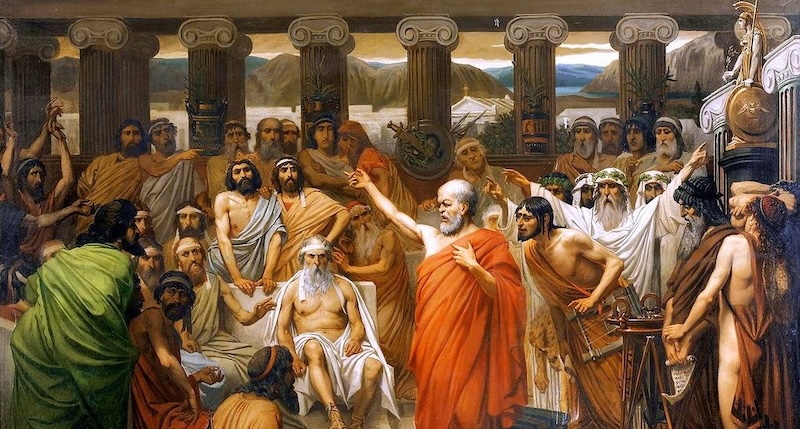
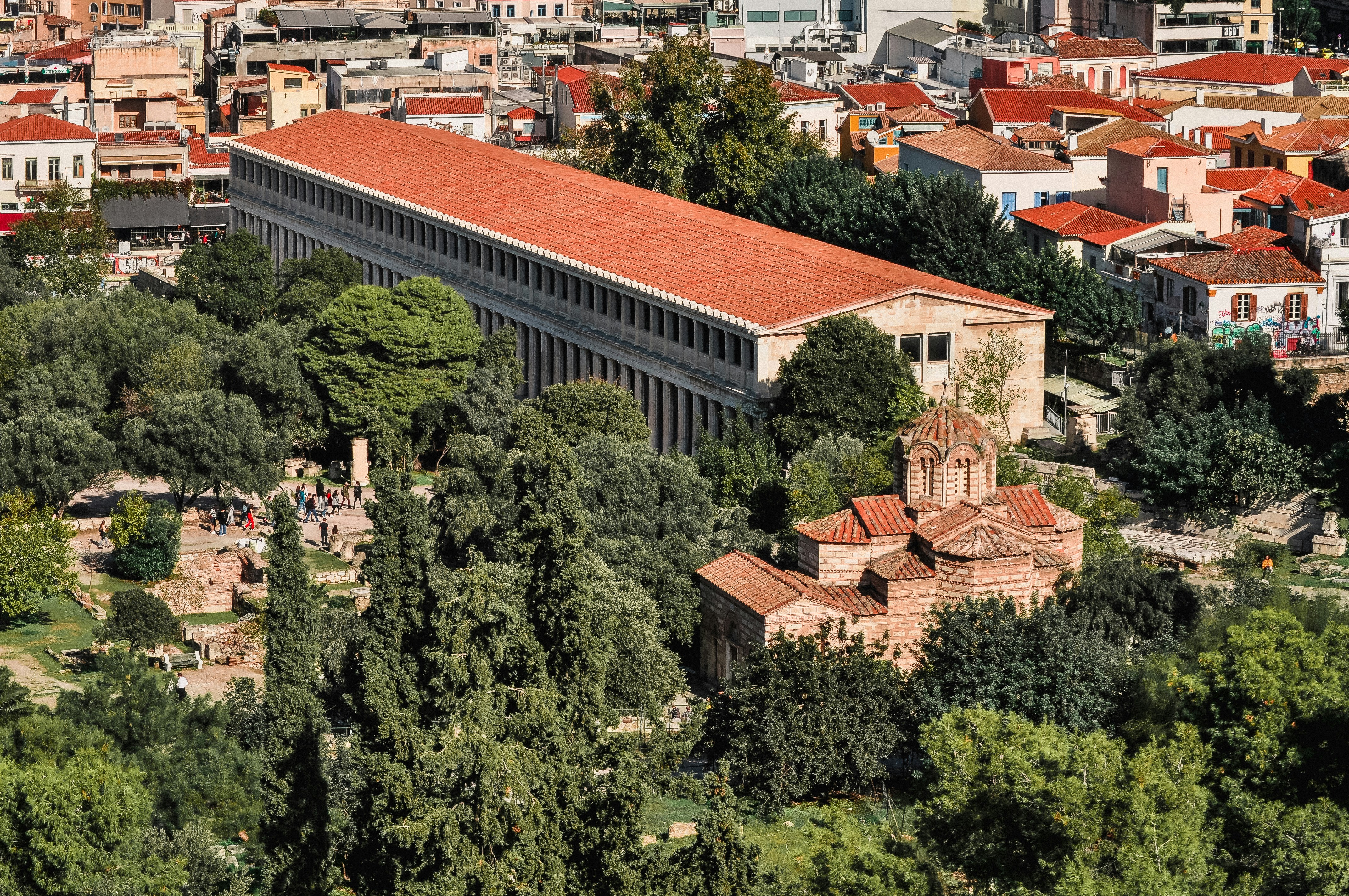
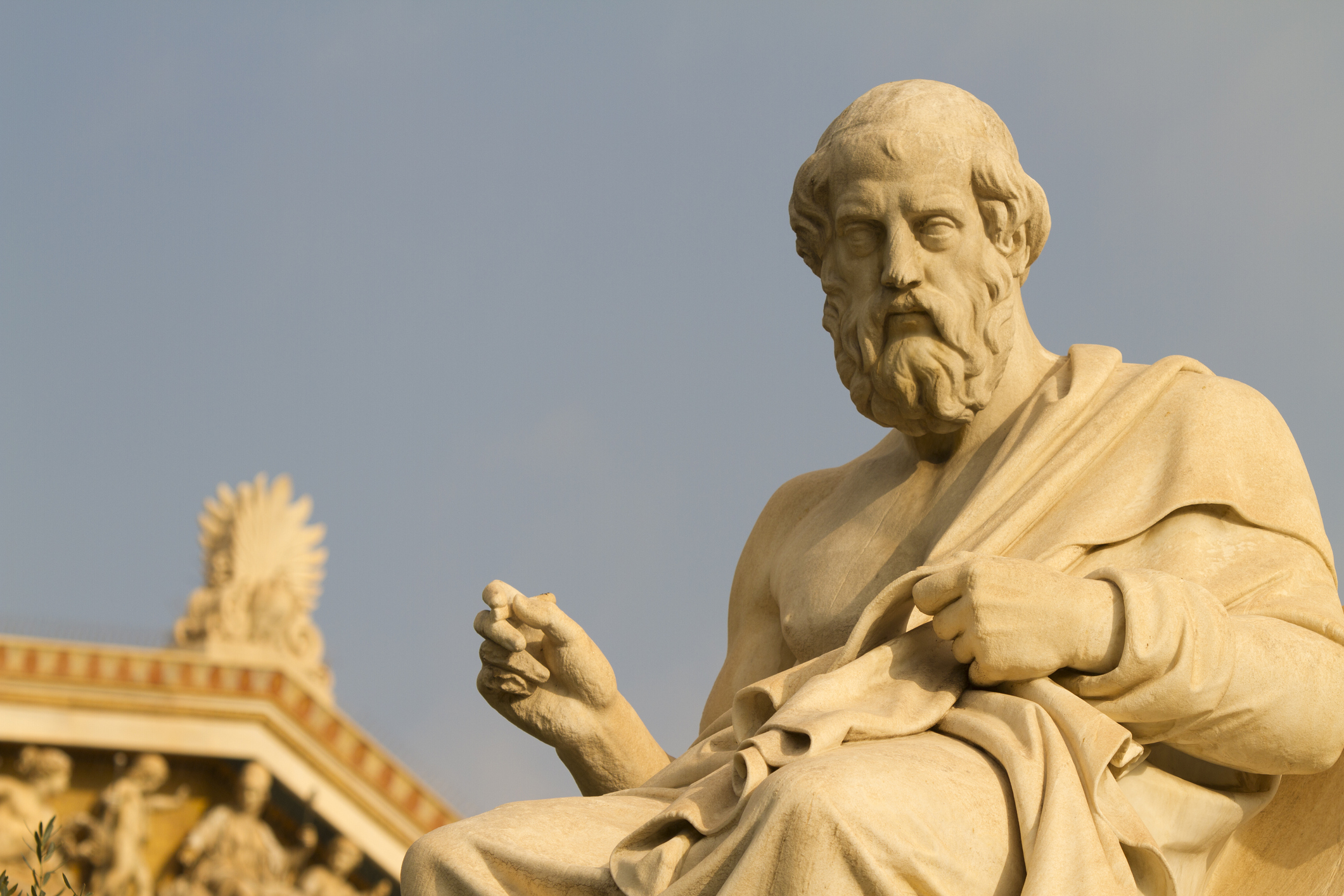
Comments